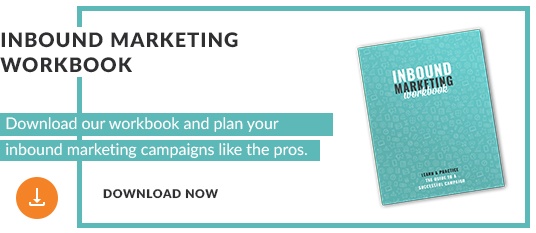 Adam Marquardt
Adam Marquardt
Updated July 2020
What constitutes a good marketing campaign strategy, and what does it take to really draw in the target audience and make a long-lasting, high-impact impression? Here are seven winning marketing campaign strategies sure to make your marketing shtick strong enough to stick around.
1. Clear & Concise Calls-to-Action
To begin with, any marketing campaign strategy should always implement a call-to-action. What do you want your audience to do with the information you’ve just given to them? The best calls-to-action are up front and easy to find. You only have your visitor there for as long as you can hold their attention, so don’t waste time by camouflaging your call-to-action within the information.
And now that you’ve got their attention, go ahead and be direct. Don’t waste time trying to be cute and clever. People’s time is limited, so it’s best to just get to the point. Using clear and concise language for your call-to-action is the quickest way to get results. You don’t want to leave any room for confusion or uncertainty. Choose words that convey the unique value you have to offer your audience, and you’ll make them excited to take the next step.
2. Hyper-Target to a Niche Audience
What matters more: quantity or quality? This age-old debate rears its head in many arenas, but in marketing, the answer is an absolute: quality is key. Inundating your followers with social posts or emails that don’t matter to them won’t win you any fans. People want information that adds value to their lives. And the best way to do this is by tailoring content to fit specific needs.
Social media platforms like Facebook, LinkedIn, and Twitter make it easier to build digital campaigns that cater to more specific audiences, thanks to users volunteering valuable information to marketers about their likes, dislikes, and personal details. A wealth of information that once took marketers months or even years to acquire is now just a click away.
Now, digital marketing options are expanding even more with Facebook, which allows you to build “lookalike” audiences, lists of new users who share common qualities with your existing users—an indication that they may also be interested in your business.
Today’s hyper-targeting options mean you can stop wasting time by throwing out a large net and hoping to catch a few fish. Honing in on the precise needs and wants of your audience means you’ll be able to provide more meaningful information, which will ultimately help you develop stronger leads.
3. Create a Story That Speaks to All Medias
We all love a good story: cheering on the characters, biting our nails through conflict, and feeling relief when we reach the resolution. Storytelling isn’t just relegated to novels—it’s an essential component of inbound marketing. The most successful marketing campaign strategies create a brand story that audiences can connect with. Learning more about something helps us better understand it, and the structure of storytelling both attracts our attention and keeps us engaged.
You can help your audience visualize your story with imagery. Today, 80% of marketers use visual assets in their social media marketing, and it’s no wonder why. Facebook posts with images get 2.3 times more engagement than posts with just text, and tweets with images receive 150% more retweets than tweets without them.
The future of marketing will be driven by video. People are busy, and statistics repeatedly show that visual marketing outperforms content alone. Keep in mind, however, that high-ranking search engine results are also content-driven. So mix it up. Use a combination of copy, photos, and videos to keep your audiences engaged, interested, and intrigued about your next story.
4. Make It Easy to Share
Word of mouth is still one of the strongest forms of advertising. In the social media world, this means shares. You’ll gain the most reach by making sure your marketing campaign strategy includes information that is easy to share. While it’s important to engage your direct network, the true value of Internet marketing is the fact that your campaign can reach far beyond that.
Give your articles short, catchy titles that will intrigue viewers. Include enticing meta descriptions for a teaser and add imagery for intrigue. Create funny GIFs or infographics with interesting information that make people want to retweet or repost them. Lastly, make sure social sharing buttons exist on your website.
5. Inspire Interaction
If you can inspire interaction that entertains your audience, they will be far more likely to share content and the experience with their friends. Remember when IHOP temporarily became IHOb? The brand took to Twitter to tease the name change, encouraging people to guess what the ‘B’ in IHOb was supposed to represent. Love it or hate it, people were intrigued, and they began talking. In the end, the campaign sparked over 2.1 million conversations about the brand and garnered 41 billion impressions. In the weeks following the “name change,” IHOP’s burger sales quadrupled, and they remain a popular choice on the menu. Though it seems like a gimmicky stunt, the restaurant achieved their marketing objective, which was to improve lunch and dinner sales—making this a successful marketing campaign.
You don’t have to pull off an elaborate hoax like this to get your audience engaged. Sparking interaction can be as simple as hosting a contest or fundraiser and getting creative with how you involve your audience.
6. Use a Memorable and Repeatable Spokesperson
Some of the most successful marketing campaign strategies utilize a spokesperson that audiences recognize and connect with.
- Jake from State Farm
- The Geico gecko
- Flo, the eccentric spokesperson for Progressive
- The most interesting man in the world for Dos Equis
- The Pillsbury Doughboy
A familiar face works on several levels for your brand. First, it gives audiences something to recognize besides a logo or slogan. Second, audiences better identify with a spokesperson as opposed to just a name. Lastly, the antics of these brand spokespeople create a following. Audiences are interested in what the spokesperson will say or do next and because they are essentially characters, they exist for the purpose of pushing your brand and can be used throughout all marketing campaigns.
Does your brand have a spokesperson? Who at your organization should represent your brand? It doesn't have to be a talking lizard (although if you happen to have one, our vote is to pick them). Value-based messages from the CEO, VP of Marketing, or Director of Sales can be equally brandable. Additionally these messages can position members of your team as thought leaders. Remember, the most essential way you can connect with others is to start with why. Keeping this at the heart of your messaging—and using it to tell your brand story via a spokesperson—will help you make a more lasting impression with your audience.
7. Go Completely Against Traditional Methods
It is said that no one ever made history by behaving themselves. In order to truly break the mold and create a campaign that blasts your brand to the next level, throw away the tired, traditional marketing methods and push the limits. Today’s audiences celebrate innovative and different ideas. So poke fun at those who conform to the old-school methods for marketing and get creative. The whole point is to stand out from all the rest.
You have technology on your side. Audiences today aren’t engaged by boring marketing and respond more positively to brands that are doing something different. Visit the Twitter pages of Wendy’s or MoonPie to see an example of this in action. Both brands tailor their tone and content to fit the platform—tweeting about trending topics and providing relatable and humorous comments likely to go viral—while still managing to tie their antics back to their brands. This has the added bonus of reaching current customers while also getting into the minds of consumers who may not be thinking about those brands at all.
To sum it all up, marketing campaign strategies should encompass all marketing tools with an audience experience focus in mind. Consistent, remarkable, sharable content that inspires action, engages viewers in a story and stands different from every other marketing campaign will impact success. And don’t forget to target your message to the audiences most likely to appreciate what you have to share. This will fortify stronger networks capable of yielding relationships.

